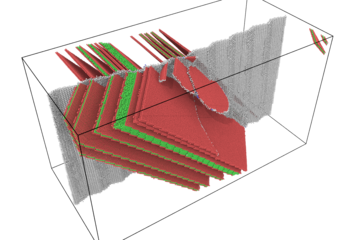All genres
141.
Poster
ω phase accommodated nano-twinning mechanism in Gum Metal: An ab initio study. 3rd International Workshop on Physics Based Material Models and Experimental Observations: Plasticity and Creep, Cesme/Izmir, Turkey (2014)
142.
Poster
A novel roll bonding methodology for the cross-scale analysis of phase properties and interac-tions in multiphase structural materials. MSE 2014, Darmstadt, Germany (2014)
143.
Poster
Verbinden von hochfestem Stahl mit einer Aluminiumlegierung durch Rührreibschweißen. 4. GKSS Workshop, Geesthacht, Germany (2009)
144.
Teaching
Allgemeine Werkstofftechnik. Lecture: WS 2024/2025, RWTH Aachen University, 2024-10 - 2025-03
145.
Teaching
Allgemeine Werkstofftechnik. Lecture: WS 2023/2024, RWTH Aachen University, 2023-10 - 2024-03
146.
Teaching
Allgemeine Werkstofftechnik. Lecture: WS 2022/2023, RWTH Aachen University, 2022-10 - 2023-03
147.
Teaching
Allgemeine Werkstofftechnik. Lecture: WS 2021/2022, RWTH Aachen University, 2021-10 - 2022-03
148.
Teaching
Allgemeine Werkstofftechnik. Lecture: WS 2020/2021, RWTH Aachen University, 2020-10 - 2021-03
149.
Teaching
Micromechanics of Materials Design and micromechanics of metal matrix composites and high-throughput mechanical test-ing for alloy design. Lecture: RWTH Aachen, SS 2016, Aachen, Germany, 2016
150.
Thesis - PhD
Fundamental Research into the Role of Intermetallic Phases in Joining of Aluminium Alloys to Steel. Dissertation, Ruhr-University Bochum, Bochum, Germany (2011)
151.
Thesis - Habilitation
Integrated Alloy and Processing Design of High Modulus Steels. Habilitation, RWTH Aachen University (2018)
152.
Preprint
High-resolution chemical and structural characterization of the native oxide scale on a Mg-based alloy. arXiv (2023)
153.
Preprint
Metallurgical synthesis methods for Mg–Al–Ca scientific model materials. arXiv (2023)










